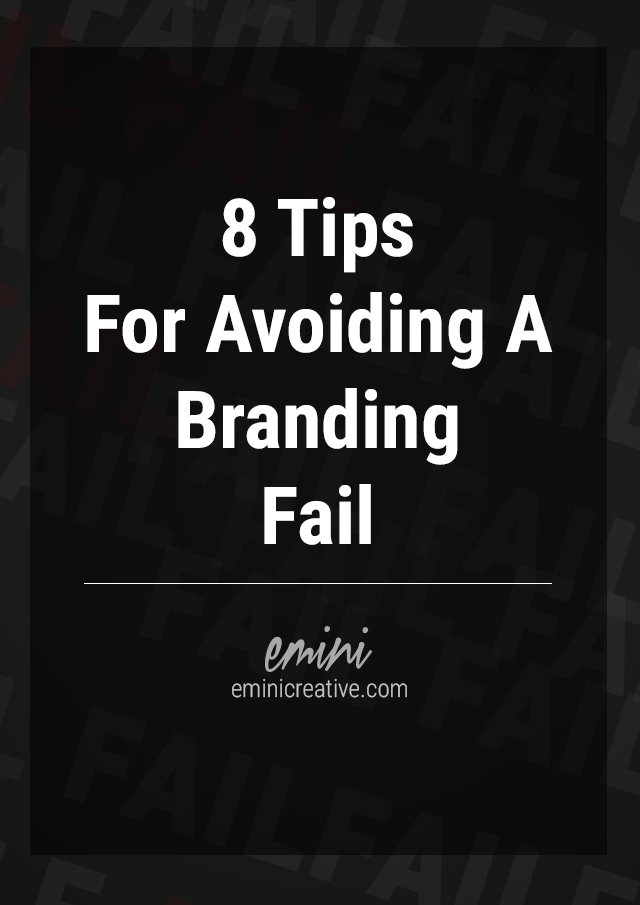1. Do not be a copycat!
Never ever directly copy someone else’s logo. Focus on being original and unique. That is the point of creating a brand image. It should be personal and unique to you and your business. The last thing you want to do is start your business and put your blood, sweat and tears into it just to end up being sued for copyright infringement. Learn the basics of fair use and copyright laws. Knowing these rules are extremely important for both developing and understanding how to protect your brand.
2. Research, research and then research some more.
Research other brands within your competitive field. Understand the industry in which your competitors are marketing. Knowing this will help you understand what works and what doesn’t, as well as, what divides a successful business from a failing one.
3. Keep it simple and versatile!
You’ve heard it before but it’s great advice – ‘KEEP IT SIMPLE STUPID’. There’s no need to cram your logo full of unneeded imagery and text. Stop and think about all the ways you plan to use your logo. An effective logo should have the ability to work across a variety of mediums and applications from billboards to business cards. Failing to do so will create problems for you further down the road and possibly force your business to undergo a complete rebrand which is no easy task.
4. Avoid the clichés and generic ideas.
Generic ideas get lost in the crowd and defeat the purpose of creating your own distinct brand. Your brand should speak for you and speak loud and clear. For example, if your logo or brand is interchangeable from industry to industry then it is not original enough.
5. Branding by committee.
This is a really common mistake and there is no quicker way to send a branding project down a long winding road of confusion, than attempting to design a brand by committee. The process of asking multiple people within your office, family or friends circles their thoughts on your brand can really murk up the vision of a project. Try limiting the number of people contributing input to three or less. Only ask the opinions of the individuals you trust and have knowledge of your industry. Keep the decision making process as simple and clear as possible.
6. Choose your typeface carefully.
Steer clear of fads and trendy typography. Trust me, I understand the desire to use your favorite new font but while it may look very cutting edge now, you’ll find yourself rebranding two years down the road. Believe it or not typefaces are incredibly important. The typeface you choose will portray a specific emotion and message. Do a little research and understand the difference between typefaces and styles of fonts. Learn more about that here.
7. Using too many colors.
Seriously consider the color palette you use for your brand. Try to limit your colors to five or less. Exceeding this number can be visually overwhelming to the viewer and may push potential customers away. If you are searching for a nice color palette a great free and online resource is Adobe Kuler. It’s quite helpful and most of the color palettes are created by designers so even if you’re not familiar with color theory you can still come up with clean and cohesive color palette options. I’m an avid user and I highly recommend it.
8. Never use clip art, premade designs or design contests.
The use of Clipart is one of the most frustrating things found in brand development today. It cheapens the brand and gives the impression that you do not care about your business.
I also urge you not to go to logo design sites that that sell premade logos. These logos are basically ‘design rejects’. Often times when designers work on a branding project they take their declined concepts and sell them on these open markets. This leads to generic and impersonal brands.
Logo “contest” sites are a whole different can of worms. The problem with these sites is they will sell you a design and then resell the same logo repeatedly to other businesses throughout your industry. You may end with the same brand design as another business 30 miles away. This opens you up for potential copyrights issues and lawsuits.
If you apply these basic tips to your next branding project we’re positive you will be happy with the outcome and the entire process in general. We know navigating the minefield of brand development can be confusing and slightly intimidating so If you find yourself lost in the process we are here to help. If you have any question reach out to us in the comment section or through our contact page. Goodbye and good luck!




No Comments
There are not comments on this post yet. Be the first one!